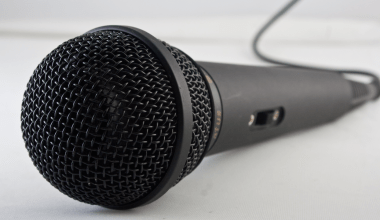Imagine you’ve written a fantastic song. The lyrics are deep, the beat is catchy, and the melody sticks in your head. But when you play it, something doesn’t sound right—it’s messy or unbalanced. This is where music mixing techniques come to the rescue!
Mixing is like putting the final touches on a painting. It makes your track sound polished, clean, and professional. Whether you’re new to music production or already experienced, mastering these techniques will help your songs stand out.
In this guide, we’ll break down everything you need to know about mixing your music in a simple, easy-to-understand way.
1. What is Music Mixing?
Mixing is the process of blending all the sounds in a track so they work well together. This includes the vocals, drums, bass, and other instruments. Think of it like making a smoothie: you want every ingredient to be just the right amount—not too much, not too little.
Why Mixing Matters:
- It makes your track sound professional.
- It helps each sound find its place in the song.
- It ensures the music sounds good on different devices like phones, speakers, or headphones.
2. Start with Clean Recordings
Before you even start mixing, make sure your recordings are clear. If something is off, like background noise or bad quality, it will be harder to fix later.
Tips for Better Recordings:
- Use a good microphone.
- Record in a quiet space.
- Avoid clipping (when sounds are too loud and distort).
3. Volume Balancing: The Foundation of Mixing
The first step in mixing is setting the right volume for each element in your track. For example, the vocals should be loud enough to hear clearly, but not so loud that they overpower the music.
How to Balance Volumes:
- Start with the drums and bass since they form the base of the song.
- Gradually add in other instruments like guitars or synths.
- Keep adjusting until everything feels balanced.
4. Panning: Place Sounds in the Stereo Field
Panning is when you move sounds left or right in the stereo field. This creates space in your mix and makes it feel wider.
Easy Panning Tips:
- Keep vocals, bass, and kick drums in the center.
- Pan guitars slightly left and right for a fuller sound.
- Experiment with effects like panning background vocals to one side.
5. Equalization (EQ): Shaping the Sound
EQ is like a magic tool that lets you boost or cut specific frequencies in a sound. For example, if your vocals sound dull, you can boost the higher frequencies to make them sparkle.
Simple EQ Tricks:
- Cut first: Remove unwanted frequencies (like rumble in the bass).
- Boost carefully: Only enhance what truly needs it.
- Use presets: Most software has EQ presets for vocals, drums, etc.
6. Compression: Smooth Out the Dynamics
Compression controls the difference between the loudest and softest parts of a track. It ensures your music doesn’t have sudden volume jumps.
Easy Steps to Use Compression:
- Set the threshold (the level where compression starts).
- Adjust the ratio (how much compression is applied).
- Fine-tune the attack and release times.
7. Reverb and Delay: Adding Space
Reverb makes your sounds feel like they’re in a specific space, like a concert hall or a small room. Delay repeats the sound, like an echo.
Tips for Using Reverb and Delay:
- Use reverb on vocals to make them feel natural.
- Add a small amount of delay to instruments for depth.
- Don’t overdo it—too much reverb can make your mix sound muddy.
8. Layering: Build a Bigger Sound
Layering is when you combine multiple sounds to create one fuller sound. It’s often used for vocals, synths, and drums.
How to Layer:
- Use two or more recordings of the same part.
- Pan each layer slightly differently.
- Use EQ to make each layer stand out.
9. Automation: Keep the Mix Interesting
Automation allows you to make changes in your mix over time, like gradually increasing the volume of a guitar solo.
Examples of Automation:
- Lower the music volume during verses so the vocals shine.
- Increase reverb on the final chorus for drama.
- Fade out the song at the end.
10. Balancing Bass and Kick Drum
The bass and kick drum are the heart of many tracks. They should work together, not compete.
Tips for a Balanced Low End:
- Use sidechain compression to duck the bass when the kick hits.
- EQ the bass and kick to occupy different frequency ranges.
- Check your mix on different systems to ensure the bass isn’t too heavy.
11. Vocal Mixing: Making the Voice Shine
Vocals are often the star of the show. A poorly mixed vocal can ruin an otherwise great track.
Steps to Perfect Vocals:
- De-ess: Remove harsh “S” sounds.
- Add warmth: Use EQ to boost lower frequencies slightly.
- Compress: Keep the vocal volume consistent.
12. Reference Tracks: Learn from the Best
A reference track is a professionally mixed song in the same style as yours. Use it to compare and adjust your mix.
How to Use a Reference Track:
- Check if your mix is too bright or too dull.
- Match the loudness of your track to the reference.
- Notice how instruments are placed in the mix.
13. Mixing on Headphones vs. Speakers
Not everyone has access to expensive studio monitors, and that’s okay! Many producers mix on headphones.
Headphone Tips:
- Use high-quality headphones with a flat response.
- Take breaks to avoid ear fatigue.
- Double-check your mix on speakers if possible.
14. Avoiding Common Mixing Mistakes
Mixing can be tricky, and it’s easy to make mistakes. Here are some to watch out for:
- Over-processing: Using too many effects can ruin the natural sound.
- Ignoring phase issues: This happens when sounds cancel each other out.
- Not taking breaks: Fresh ears can catch mistakes.
15. Practice Makes Perfect
Like learning an instrument, mixing takes time and practice. Don’t worry if your first mixes aren’t perfect—they will get better with each track.
FAQs About Mixing Music
Q: Do I need expensive software for mixing?
A: No! Many free tools and plugins are excellent for mixing. Start simple.
Q: How long does it take to mix a song?
A: It depends. Some songs take hours, while others can take days. Focus on quality, not speed.
Q: Can I mix on my laptop?
A: Absolutely! Just invest in good headphones or external speakers for better sound quality.
Conclusion: Make Every Song Your Best
Mixing isn’t just about technical skills; it’s about bringing your creative vision to life. By learning and practicing these top music mixing techniques, you’ll be able to turn your ideas into professional-sounding tracks.
Don’t forget to keep experimenting and have fun with the process! For more help, check out our AI Mastering Services and Music Distribution Platforms to take your music to the next level.
Related Articles:
For further reading, explore these related articles:
- Vocal Techniques 2024: Learn How to Sing Better and Feel Confident
- Exploring the Latest Iconic Music Albums That Redefined the Industry
For additional resources on music marketing and distribution, visit DMT RECORDS PRIVATE LIMITED.






